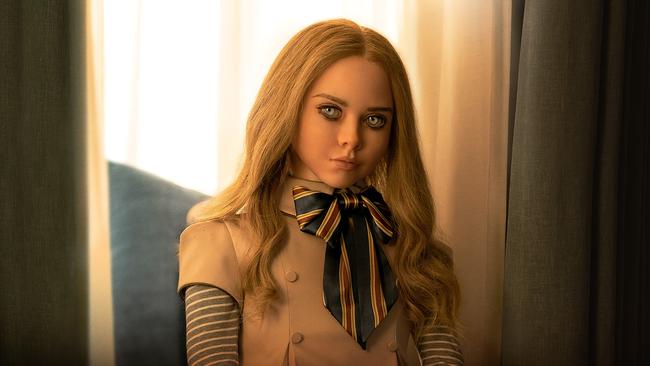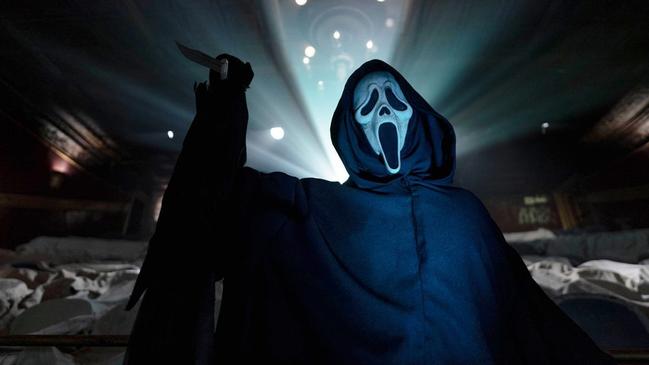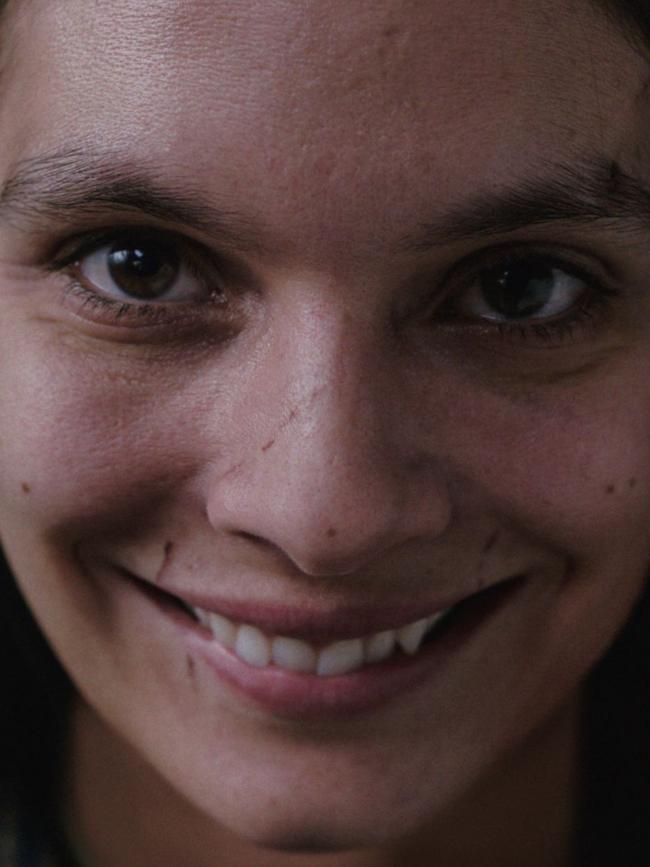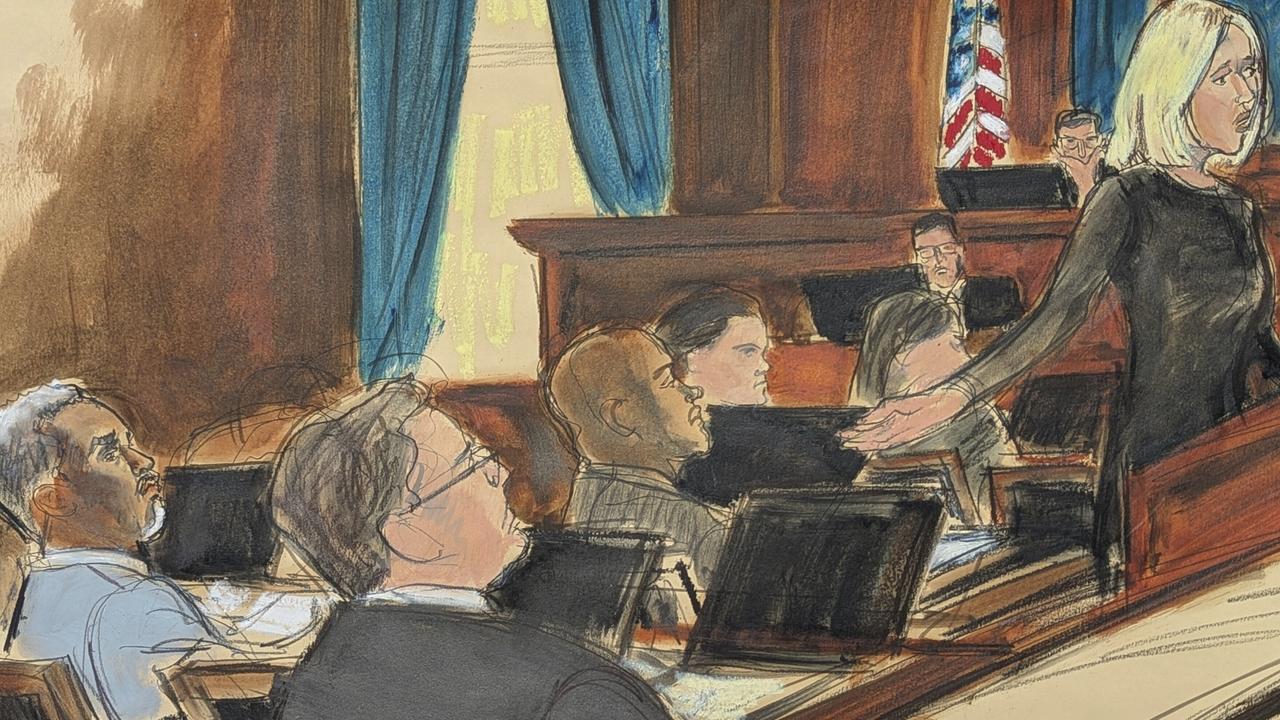Hollywood is betting on fear
A boom in scary movies is here as studios seek to lure audiences back to theatres. Brace yourself for a new brand of horror.

Hollywood, once again, is resorting to scare tactics.
Producers and studio chiefs say we’re headed into a horror movie boom, as they rush to sign big-ticket deals with top writers and directors in the genre and load their theatrical slates with scary thrillers.
Major studios including Paramount Pictures, Warner Bros Pictures’ New Line Cinema and Universal Pictures have recently poached A-list horror writers and directors and launched new divisions to bolster their spooky offerings.
Horror films, typically made with much lower production budgets than superhero epics or science-fiction sagas, have long operated on a boom-and-bust cycle. When a scary movie becomes an unlikely hit, studios will try to replicate it with a flurry of similar titles. Then comes the bust: Quality suffers and audiences get fatigued by how many mediocre scary movies are coming out, leading studios to pull back.
It happened after 2013’s The Conjuring – an exorcism thriller – sold $US480m in tickets globally. Then it happened again with Get Out, a supernatural commentary on racism, which did $384m at the global box office in 2017, the same year the demonic doll tale Annabelle: Creation did $461m and creepy clown thriller It sold more than $1bn in tickets worldwide.
This year, horror is off to a strong start with M3GAN, about a murderous doll animated by artificial intelligence.
The film has grossed $175m worldwide since January, while Scream VI, produced by Spyglass and Paramount, debuted in March and has taken almost $70m in the US alone.
Studios plan to keep the momentum going with 29 more horror movies scheduled for release before the end of the year.
“Every few years, an anonymous, obscure, cheap horror movie will come out of nowhere and over-perform massively, and suddenly everyone jumps in,” said Blumhouse Productions founder and chief executive Jason Blum.
This past year, that sleeper appears to be Smile, a spooky psychological thriller from first-time writer-director Parker Finn about a doctor whose patients keep committing suicide after falling victim to a curse that contorts their faces into creepy grins.

Paramount Pictures, which had initially planned to release it as a streaming-only title, decided at the last minute to put it in theatres, where it earned $217m on a production budget of just $17m, making it one of the studio’s most profitable releases last year.
Paramount rewarded Finn, 36, with a multi-year first-look production deal that was signed last month and includes a sequel he is writing. The filmmaker had toiled in Hollywood obscurity before making the self-financed, festival-darling short film that would eventually become Smile. Finn, whose father sold home-theatre equipment and brought home a steady stream of VHS tapes, has been a cinephile since a young age.
Since the success of Smile, the studio has doubled down on horror, giving Walter Hamada, the former head of the DC Films superhero franchise, a contract to make horror movies exclusively for Paramount.
Hamada hopes to make up to four horror movies annually, each with a budget of between $23m and $37m.
“Horror movies tend to be kind of pure,” Hamada said. Many directors are in the early parts of their careers and the genre doesn’t generally rely on A-list actors, in part because stars’ fame factor makes it harder for audiences to imagine themselves in the same scary situations the actors encounter, he said.
With the film exhibition business in a multi-year slump that was accelerated by the pandemic’s cinema closures, producers want to make movies that audiences have more of an incentive to watch in theatres.
Horror is one of a few genres that industry veterans say are custom-made to be watched on the big screen with a thumping sound system. Audiences prefer to be spooked in big groups, with adrenaline pumping, screams echoing, popcorn flying and couples clutching each other for safety.
“There’s a desire for escaping into a communal experience,” said Mike De Luca, co-chair of Warner Bros Pictures and a horror movie buff himself. “The bar for originality is just higher today.”
The proliferation of streaming video platforms has also led to some overkill as well, De Luca said: dozens of low-budget streaming-only horror movies come out each year – the equivalent of the direct-to-VHS B-movies of old – that can overwhelm audiences and send them searching for smarter horror titles.

Today’s audiences demand smarter horror movies, he said, with innovative plots and richly developed characters, rather than the slasher gross-outs of the 1980s such as Blood Diner or The Slumber Party Massacre, or the endless remakes of classic tales such as Dracula.
If today’s horror boom gives way to another bust, it might look something like the late 2000s, when Hollywood produced such bombs as The Wolfman. The 2010 film cost about $225m, grossed $210m and was widely panned by both critics and audiences for its over-the-top computer-generated graphics.
Some box office flops from that era, such as 2006’s Slither, director James Gunn’s homage to the low-budget zombie gross-outs, were well reviewed and later became cult classics.
So what makes a good horror flick?
Directors, writers and producers insist the scares are mostly the same as they ever were – sadistic murderers, darkly lit hallways, dolls that move on their own, killers wearing hockey masks, shattered mirrors and spontaneous fires among them. But audiences demand more sophisticated writing and some connection to the social issues of the day.
One of last year’s critical darlings was Barbarian, written and directed by sketch-comedy writer Zach Cregger and released by 20th Century Studios, which was made for less than $7.5m but grossed almost $70m. The movie follows Tess Marshall, played by relatively unknown British actor Georgina Campbell as she arrives in a rough corner of Detroit for a job interview.
Her Airbnb is double-booked, and she is wary of the man staying there. The plot takes a sudden turn in the second act, as the Airbnb’s owner, a television actor accused of sexual assault, arrives to prepare the house for sale and discovers its lurid, mysterious past.
Richard Brener, president and chief creative officer of Warner Bros’ New Line Cinema, said the most dreaded word a studio can hear these days from audiences in a horror movie test screening is “cheesy” – shorthand for artificial, not scary.
Brener loved Barbarian so much he watched it six times. “Barbarian really kept you on your toes. It had this really smart lead character, and through her, Zach told the audience, ‘I know what you’re thinking, but I’m not going to put another dumb character in the basement’,” Brener said.
Cregger told Brener women have to be on the lookout for red flags men don’t always see, and that female perspective was an idea he tried to develop as a major source of terror in the movie.
The studio paid about $15m, people familiar with the matter say, for the right to distribute his next movie – titled Weapons – and signed him up to produce two more.
Campbell believes the movie was successful in large part because it doesn’t rely too heavily on computer-generated effects.
For example, when one character is killed by having his head bashed against a wall, the shoot called for three separate life-size models of his head in various states of bloodiness.
In another scene that was eventually cut from the movie, the actor playing a deformed, inbred character known as Mother force-feeds co-star Justin Long bits of chewed up prosciutto from his mouth, imitating the flesh of a rat. Campbell said the shoot was a lot of fun.
The scariest movie of all time, according to a study conducted last year by British internet service ratings firm Broadband Choices, is three-year-old indie film Host, which was filmed entirely using Zoom videoconferencing software during the Covid lockdowns.
While watching, viewers’ average resting heart rate rose from 64 beats per minute to 88. During its scariest moments, involving attacks by evil spirits summoned by a medium during a Zoom call, audience heart rates spiked to 130 beats per minute.
The fastest heart rates recorded by the study were 133 beats per minute, which happened when viewers saw the scary scenes in 2010’s haunted house thriller Insidious.
Horror audiences are becoming smarter and more demanding in part because they are growing to include more general-interest moviegoers and more women, said Alison Peirse, a film studies professor at the University of Northumbria in England’s Newcastle-upon-Tyne.
Historians of scary films have identified the trope of the Final Girl – the one female character who lives to tell the movie’s terrifying story by either thwarting the killer or being saved by a male authority figure. For much of the genre’s history, final girls have been virginal, sober and well behaved – which critics of the genre say suggests that promiscuity, drug and alcohol use and unconventional behaviour lead to death.
Some surveys still show the genre leans male, but horror audiences have split by gender roughly 50-50. Older audiences have grown significantly.
Last year’s highest-grossing horror movie, Smile, almost didn’t show in theatres at all.
The movie was slated to be released on the nascent streaming service Paramount+, but the studio did a test screening. Audiences loved it, so the film was sent to studio chief Brian Robbins, who watched it at his home alone on a Saturday morning.
“It scared the daylights out of me,” Robbins said.
Paramount hastily ordered up another test screening, then decided to pull the movie out of the direct-to-streaming pipeline. The studio launched an all-out marketing campaign that included strategically placing the movie’s stars behind home plate during several nationally televised baseball games with their trademark psychotic smiles plastered on their faces.
Writer-director Finn’s goal in making the film was to use tension and fear to provoke a physical reaction in audiences.
“When you suddenly find marionette strings attached to you, and the movie is jerking those strings … that, to me, is when a horror movie is truly successful,” he said.
Blum closed a $600m deal in 2021 to produce three movies based on the same story behind 1973’s The Exorcist, the first of which comes out later this year. He said he expects that consumers will see a “huge increase” in the next two years in the volume of wide-release horror movies, but that most of them will be of low quality.
“If it were easy to make a commercially successful, wide-release horror movie,” Blum said, “I would make more than four a year.”
The Wall Street Journal



To join the conversation, please log in. Don't have an account? Register
Join the conversation, you are commenting as Logout